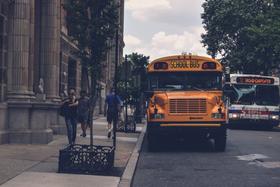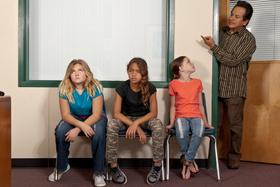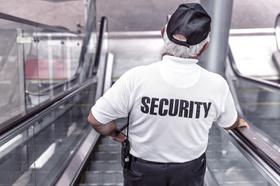With the alarming rise in violence at public schools across the country, zero-tolerance policies have become the norm. In theory, these policies should lead to safer schools, since they offer school administrators the ability to deal with infractions promptly and decisively. However, the practice of zero-tolerance policies is showing significant flaws in the system, and many are demanding reform in the rules that have proven to hurt students more than they protect them in some cases.
The Purpose of Zero-Tolerance Policies
The establishment of zero-tolerance policies began in the 1980s. At the time, these policies primarily dealt with major offenses involving weapons and drugs. The term was first introduced by the Reagan Administration when the President launched his War on Drugs. When the federal government passed the Drug-Free Schools and Campuses Act of 1989, zero-tolerance policies became the law.
According to the , zero-tolerance policies expanded with the federal Gun-Free Schools Act of 1994, which mandated that any student caught bringing a gun to school would be expelled for one year or longer. Students accused of violations were also to be referred to local law enforcement agencies. However, it wasn’t long before that zero-tolerance policy was expanded to encompass a host of infractions, from dress code violations to assaults on another student. At that point, many began to question the effectiveness of zero-tolerance policies, particularly in situations where the policy began to override common sense and the best interests of the students involved.
This video reports on New York City Mayor Bill de Blasio who announced new rules that will limit arrests in school. Decades of data show NYC schools discipline African American and Latino students at higher rates.
The Lack of Flexibility
One of the biggest complaints about zero-tolerance policies is the lack of flexibility they offer. According to , 87 percent of public schools now have a zero-tolerance policy that requires suspension or expulsion for all types of alcohol and drug infractions – no matter how small the offense might be. Even more schools, 91 percent, have similar policies in place for students who bring weapons to school. While the policies may sound good on the surface, the actual practice has shown an inflexibility bordering on unfairness in the manner in which some schools deal with some students.
“Zero tolerance and expulsion don’t have to go hand in hand,” Ronald Stephens, executive director for the National School Safety Center in Westlake, California, told USA Today. “Zero tolerance simply means all misbehavior will have some sanction. It doesn’t mean you bring the maximum punishment for every transgression.”
However, school districts across the country are resorting to exactly those measures in an effort to keep classrooms safe and students in line. A report at says that school board members in Michigan are urging school districts to take another look at zero-tolerance policies to determine whether they really are the most effective methods for achieving disciplinary goals. Some Michigan educators are asserting that zero-tolerance policies actually do not have a positive effect, and in some cases, actually have a negative impact on students’ academic performance.
This TedTalk discusses the effect of zero-tolerance policies on teenagers.
Negative Effects of Zero-Tolerance Policies
Michigan school board members are vying to eliminate many of the zero-tolerance policies throughout the state, including mandatory expulsions for students guilty of infractions that do not include weapons. Educators also want school districts to re-examine zero-tolerance policies to limit the number that leads to suspensions or referrals to law enforcement agencies. The concern among board members is that when students are not in school, they cannot learn, which opens the door to a host of additional issues.
“Many students who have been suspended or expelled have no alternative opportunities for learning or other productive activities,” mLive reports. “When students are repeatedly suspended, they are at substantially greater risk of leaving school altogether, and current rates of suspension and expulsion in Michigan public schools is unacceptably high.”
The Detroit Free Press reports that the ACLU and other organizations see zero-tolerance policies as a direct route from school to incarceration. As the likelihood of school completion goes down, which it does through repeated suspensions or expulsion, the more likely the crime rate is to rise. The problem is especially concerning for low-income and minority students, who tend to receive more extreme disciplinary measures than their peers.
This video examines whether zero-tolerance policies make schools into police states.
“The issue has become one of a punitive philosophy towards discipline,” Rodd Monts, field director of the Michigan ACLU, told the Detroit Free Press. “Instead of addressing the issues, school districts are now coming with more of a heavy hand and laying down policies that end up getting [students] pushed out.”
Zero-tolerance policies may also have a negative impact on student health overall. reported on a study funded by California Endowment that showed students who go to schools that practice zero-tolerance policies were more likely to suffer from high-stress levels. The report also found that students enrolled in zero-tolerance schools generally had higher dropout rates and participated in fewer extracurricular activities.
On the other hand, schools that practiced other forms of discipline, including restorative justice and positive behavioral interventions and support were more likely to have better grades and test scores and higher attendance rates. These disciplinary programs tend to involve students more directly with teachers and allow them to get directly involved with the disciplinary process in their schools.
Zero-tolerance sounds like an effective disciplinary method on the surface, but digging deeper reveals a system fraught with potential issues and negative student impact. Now maybe the time for schools to take a second look at their zero-tolerance policies to determine whether there is a better way to maintain order while giving students the education they need to succeed in life.
Questions? Contact us on Facebook. @publicschoolreview















